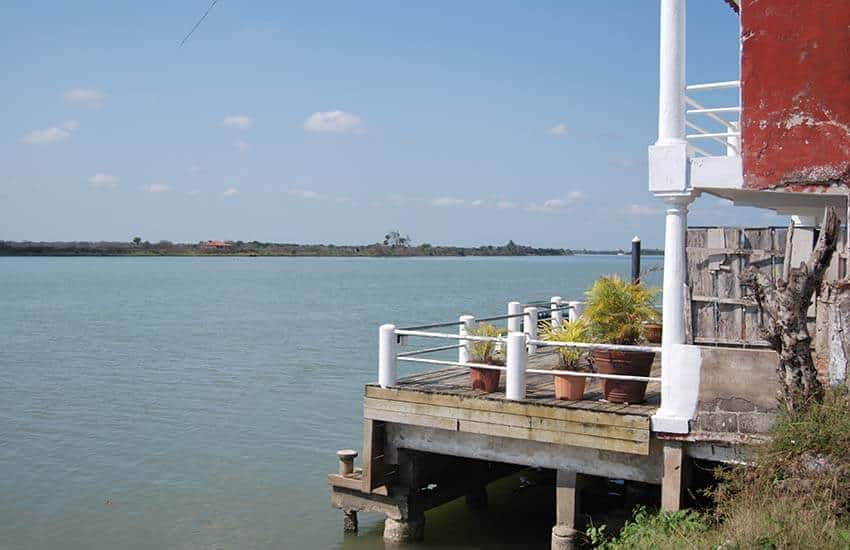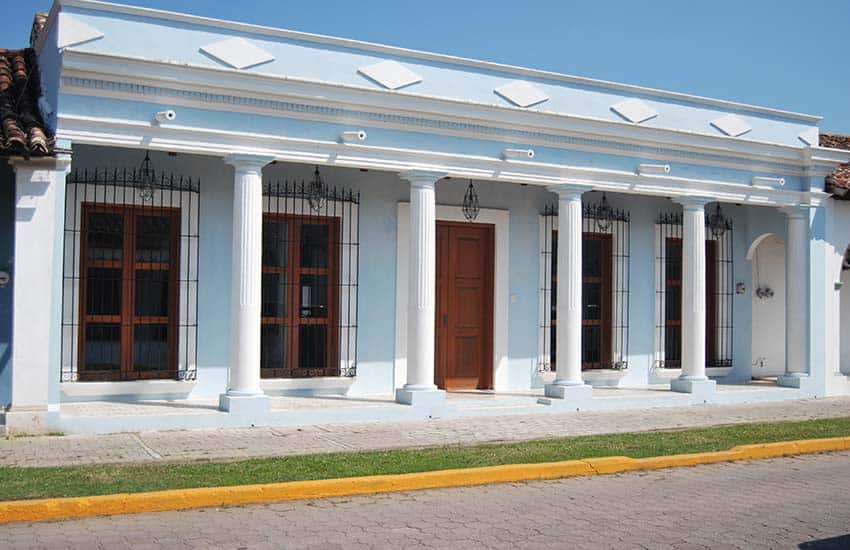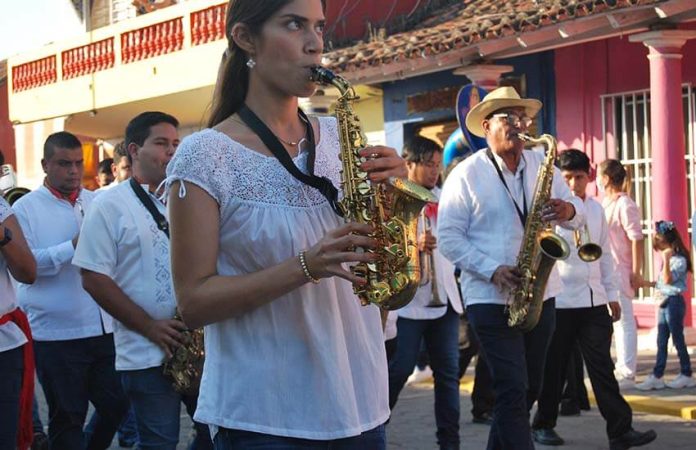Arriving at night in Tlacotalpan, Veracruz, the Papaloapan river is an unseen presence riding along beside you. A rural road dotted with streetlamps leads you down a skinny land bridge with the black-as-night river on one side and cattle farms stretching to the horizon on the other.
A hint of fish aroma wafts in through the car windows as you drive, and minus the modern electricity, the area looks very much like it must have when it was filled with sleepy fishing communities before the Spanish conquest.
According to town historian Alvaro Zarrabal, not much is known of Tlacotalpan’s early inhabitants. Neither artifacts nor written remains of their society remain, and nearby ruins that might have given researchers a clue were destroyed long ago. The town’s remembered history is decidedly colonial.
Spanish traders moved here in the 1600s, when their main settlement in Port of Alvarado, some 30 kilometers away, was beset by piracy. When they moved inland, they established Tlacotalpan for several centuries as a trading center for the entire area.
The small city boomed in the pre-railroad years when waterways were the main form of transport of people and goods throughout the country; it even boasted one of the many vacation homes of Mexico’s polarizing president Porfirio Díaz.

But when the beginning of the 20th century brought railroads Tlacotalpan’s fortune began a downward trajectory. By 1998, when the town was named a UNESCO World Heritage site, it had spent a generation collecting little but dust in this sultry part of Mexico’s south.
But when the morning’s first rays of sun hit the town’s clay-tiled rooftops, the river gleams like a flood of diamonds on its 354-kilometer trek into the center of the state. While fishing is still a major source of income here, the town has seen a tourism boom since the 1990s and as its yearly Candelaria festival gained fame across the world.
Candelaria is the Mexican name for the Catholic feast of Candlemas, which occurs every year on February 2.
The Candelaria event in Tlacotalpan combines an homage to the town’s patron saint – who is the Virgin of Candelaria, protector of fishermen and the virgin of waterways – with a rambunctious son jarocho music festival, featuring performers from across the region.
Son jarocho, southeast Mexico’s traditional musical genre, comes from the combined influence of Afro-Caribbean, Spanish and indigenous rhythms and musical instruments, as well as zapateado dancing on raised wooden platforms. The music is fast-paced and old-timey, with a haunting singing style that reverberates in the ear long after the notes decay.
During the festival, founded in part by members of the country’s most famous son jarocho band Mono Blanco, hundreds of bands and individual musicians come together to play stage shows and participate in the fandangos – impromptu jam sessions that happen across the city during those days.

It’s also a time when the city fills with cowboys and tourists, drinking in the city’s makeshift outdoor pubs set up for the occasion and playing games of chance at the many fair tents that line the streets. Hawkers sell jewelry, artists host exhibitions of their work and the local government puts on three nights of fireworks displays that border on dangerous in the city’s main plaza.
One of the festival’s best highlights is the midnight mass on February 1, when bands come to pay homage to the Virgin. On February 2, a procession through the town’s narrow streets, and then a flotilla of boats, accompanies the Virgin on a yearly journey to bless the waterways.
There is also a release of bulls into the city streets – a tradition more hotly debated each year as to whether it amounts to animal cruelty – and concerts every night in one of the town’s main squares – everything from rock to banda music.
The cabalgata (a parade of horses and their riders dressed in traditional regional outfits) that starts the festivities off on the festival’s first night marches right past many of the hotels on Avenida Beltran, a main thoroughfare and the same street where a makeshift bus stop is set up each year for visitors. It’s a good place to set up a plastic chair or lean out a balcony window and watch the festivities without having to go too far from your hotel room.
Even without Candelaria’s revelry, Tlacotalpan is a little gem off the beaten tourism path suitable for most times of the year. The town’s houses glitter in Caribbean yellows, blues and pinks, and their entryways with Roman-style columns and arched front porches speak of another era.
Walk along Chazaro street, and you will get intermittent glances of the massive Papaolapan river in the meters-wide alleyways between homes. Palm trees swaying in the wind, these colonial mansions are legally required to be preserved in the style that they were built, giving the urbanscape a lost-in-time quality.
Down on the riverfront, little seafood eateries sell local delicacies: river shrimp, picadas (handmade tortillas topped with fish and other goodies), fish empanadas, chilpaya pepper salsas and torito – a local beverage often made with the local firewater (often cane liquor) that cloaks its potency in sweet and/or creamy flavors like peanut cream and joba fruit.
For Candelaria, these spaces are packed to the gills with roving vendors selling cheese, regional cookies, jewelry and more, but in the off-season, you can enjoy fresh seafood and a beer by the river with almost zero interruptions.
While less frequently visited most of the year, Tlacotalpan is definitely worth the side trip from the Port of Veracruz or the state’s southern beaches. Good food, a delectable climate and the town’s own brand of colonial quaintness will capture the heart of any traveler wishing to explore further afield and get to know Mexico’s southeast.
Lydia Carey is a freelance writer and translator based out of Mexico City. She has been published widely both online and in print, writing about Mexico for over a decade. She lives a double life as a local tour guide and is the author of Mexico City Streets: La Roma. Follow her urban adventures on Instagram and see more of her work at www.mexicocitystreets.com.
